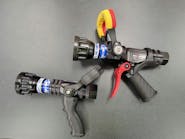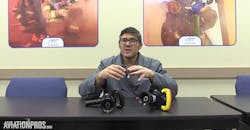Oct. 17--Apparently, the work of world-renowned artist Romero Britto is good enough to grace the walls of Miami International Airport -- but not to cover the backs of its employees.
When Miami-Dade Aviation Director Jose Abreu told commissioners near the end of their meeting Tuesday of a generous offer by Britto to fill the airport with almost cost-free art, they unanimously accepted.
But when the director showed them his vision of workers donning Britto's brightly colored pastel shirts with images of flamingos and stars and the moon, some mocked the offer.
"I don't want to see the employees at the airport walking around with tacky shirts on," groused Commissioner Natacha Seijas. "My maid wears better clothes than this T-shirt."
Seijas told of her admiration for the Brazilian artist who gained fame for his sharp lines and bright colors, and who often holes up in Miami and has works on display in more than 100 galleries around the world.
And she allowed that Britto's art would look "beautiful" displayed at MIA -- but countered that she didn't like the flamingo design on one of the proposed button-down shirts because "it looks like a snake."
Commissioner Audrey Edmonson, holding up another Britto button-down offering in dark blue with the "MIA" logo and wings extending from the acronym, posed a question to Abreu: "Will you wear it every day?"
Standing before Edmonson and Seijas at the podium, Abreu explained his expansive vision for the airport, saying he'd like to see everyone including all pilots wear the shirts, then told commissioners they could always vote the resolution down.
But "I don't look a gift Britto in the mouth," he said.
The tit-for-tat came about after Abreu asked commissioners to approve a resolution for a 48-inch-by-48-inch canvas by the painter that would be acquired for $15,000 by the Greater Miami Convention & Visitors Bureau. The art is actually valued at $150,000.
The proceeds would go to Britto's worldwide children's foundation, according to the agreement.
The language in the agreement gives the airport the right to reproduce images of the artwork throughout the airport, and to use it on uniforms.
Other suggestions from Abreu included selling replicas of new uniforms in airport shops and splitting the profits with Britto. Those got a warmer response.
Visitors Bureau Chief Executive William Talbert, who brokered the deal, tried to come to Abreu's rescue, proclaiming he would wear one of the shirts.
But he, too, was broadsided by Seijas.
"You'll look real cute, too," said Seijas, eliciting laughter from the dais and others in the audience.
Talbert said he envisioned Port of Miami workers also wearing the Britto designs that would establish Miami as a "destination."
Abreu -- conceding he was an engineer and not an artist -- said he didn't find the artwork offensive, and said he had no problem picturing community representatives greeting tourists in the loud, multi-hued shirts proposed by Britto.
"I know what my vision is for the airport," he said.
Chimed in Talbert: "Miami's a special place. Britto's a special artist."





